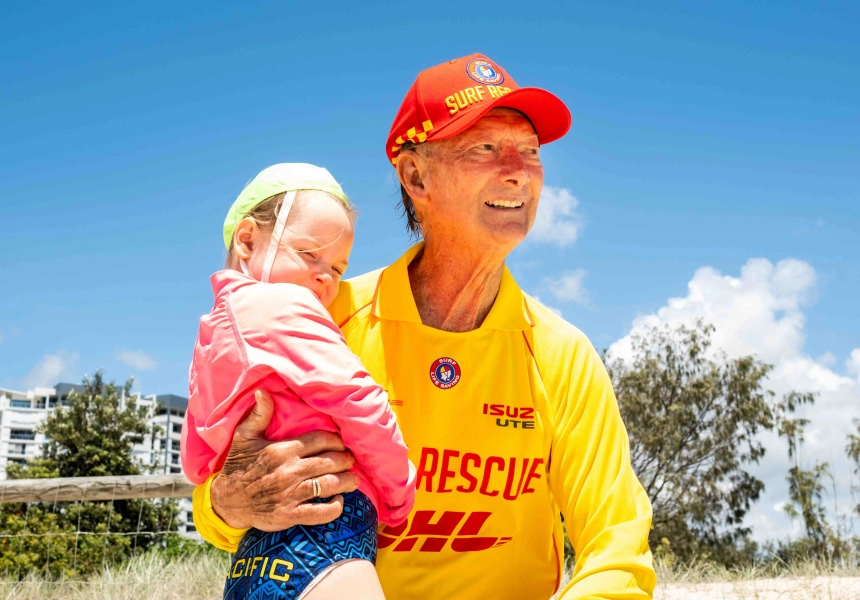You never know what you’ll find when you’re weeding through the inbox of a Broadsheet editor. There are emails about the best the bars and restaurants, chains of messages about niche pasta shapes and, honestly, a lot of junk. So when from the dumpster fire of my inbox I unearthed an email asking if I wanted to interview an 89-year-old lifeguard, I jumped at the chance.
Meet Billy Ryan, a near-nonagenarian with a better exercise regime than mine (here’s the proof). Ryan has been a member of the Point Danger Surf Life Saving Branch’s Coolangatta club since 1949, and he still patrols its beaches today.
While Ryan is a spritely 89 years young, the Point Danger branch, which was founded in 1924, is set to be the first surf lifesaving branch in Australia to mark 100 years of operation. Its lifeguards have watched the waves through all sorts of summers. They’ve seen tragedies – including a 1937 shark attack off Kirra Beach which claimed the lives of two members – and two royal visits: from Queen Elizabeth in 1963 and the Prince of Wales in 1974. (Where was that episode of The Crown, hey?)
Last season, the branch watched over more than 878,000 beachgoers and conducted 75 rescues. “The commitment and dedication of our volunteers keeping the swimming public safe is not just a tradition, it’s a living proof to the shared heartbeat of a community bound by a common purpose,” Point Danger SLSC branch president Jared Clark said in a statement.
While every lifeguard plays a vital role in keeping our beaches safe, Billy Ryan gets our nom for MVP. He sat down with Broadsheet to tell us about what being a lifeguard means to him.
What made you decide to join the surf club back in 1949?
I was always interested in being outdoors – I love people, I love to surf, I also love being at the beach.
Can you share some memories of lifesaving in the 1950s, when you were in your teens and twenties?
I remember we trained a lot. I was training twice a day – swimming in the pool during the day, then I’d go back in the evening. I wasn’t that strong a swimmer, so I really had to work hard at it. Swimming was the most important thing; back then you really had to swim well.
What’s the biggest change you’ve seen at the club over the last 70-odd years?
The biggest change has been the equipment. Now there are jetskis and powerboats – we didn’t have anything like that when I first started lifesaving. The main thing we used was the old belt and reel.
The training is also different – and the resources. Things have improved 100 per cent from the old methods to what is used today. Back then we never knew about resuscitation. It’s so much easier to save lives now, it’s unbelievable. I can’t praise surf clubs enough.
What’s your favourite thing about being a lifeguard?
I loved being out on the beach and, of course, saving people. I’ve saved dozens of people over the years.
How long do you plan to keep patrolling?
Until I can’t do it anymore.


